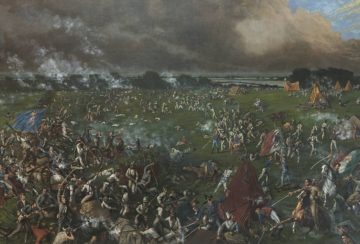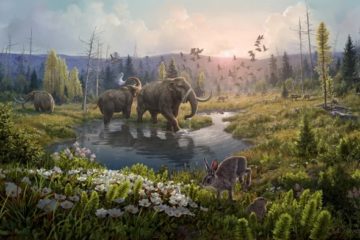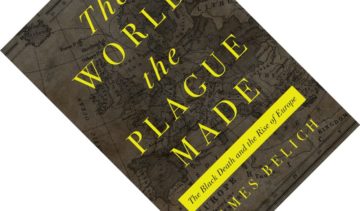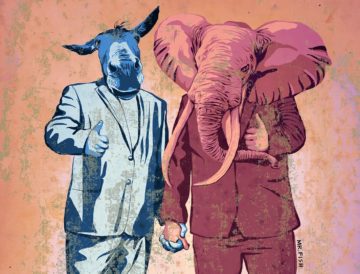Anthony Cummins in The Guardian:
 The Irish writer Gavin McCrea was supposed to be writing the third in a loose trilogy of novels about the development of communism, following Mrs Engels (2015), told in the voice of Friedrich Engels’s Irish wife, Lizzie Burns, and The Sisters Mao (2021), set in China and London during the 60s and 70s. By his own account in an interview last year, the next book will run from the fall of the Berlin Wall to the 2008 financial crash. But it got put on hold when, in February 2020, McCrea was the target of homophobic street violence while walking home. The painful memories that the attack stirred brought the structure of a memoir pouring out of him during a late-night writing session and he had no choice but to carry on.
The Irish writer Gavin McCrea was supposed to be writing the third in a loose trilogy of novels about the development of communism, following Mrs Engels (2015), told in the voice of Friedrich Engels’s Irish wife, Lizzie Burns, and The Sisters Mao (2021), set in China and London during the 60s and 70s. By his own account in an interview last year, the next book will run from the fall of the Berlin Wall to the 2008 financial crash. But it got put on hold when, in February 2020, McCrea was the target of homophobic street violence while walking home. The painful memories that the attack stirred brought the structure of a memoir pouring out of him during a late-night writing session and he had no choice but to carry on.
…Cells opens when McCrea returns to Dublin from a spell living abroad late in 2019. The advent of the pandemic adds an unforeseen dimension to his decision to stay and look after his widowed mother, a former care home worker who is becoming increasingly forgetful; under locked-down chit-chat about crosswords and vegetarian meals, he seethes with unlanced resentment that she didn’t do more when he was the victim of homophobic bullying at high school in the 1990s.
McCrea divides the narrative into seven episodes ranging fluently in time via nested memories told with reference to psychoanalysis (“According to Carl Jung… As Freud says…”) and art (the title refers, among other things, to Louise Bourgeois’s work of the same name). He writes with arresting precision, whether he’s introducing us to his mother’s flat (“There are 15 steps up, covered in an old carpet of beige, mauve, burgundy, and blue stripes… After six steps, I am in the seating area, which consists of three ill-matching bits of furniture”) or recounting a recurring dream about wetting himself in the presence of his agent’s son.
More here.

 A study surveying more than 3.4 million people has found nearly 4,000 genetic variants related to the use of alcohol and tobacco, scientists reported Wednesday (Dec 7) in
A study surveying more than 3.4 million people has found nearly 4,000 genetic variants related to the use of alcohol and tobacco, scientists reported Wednesday (Dec 7) in  Artificial intelligence (AI) is
Artificial intelligence (AI) is  I was recently reading an old article by string theorist Robbert Dijkgraaf in Quanta Magazine entitled “
I was recently reading an old article by string theorist Robbert Dijkgraaf in Quanta Magazine entitled “ In the orthodox telling, there was only one revolution that mattered, after all. The fact that American revolutionaries won their independence in part because the French intervened in their British civil war has often been narrated as at most a useful irony. Certainly Africans or Natives had nothing to do with it, except as desperate fighters for their own marginal purposes: defined out of the story partly because they lost but mostly because, well, they were defined out of the story. Yet the century-long debate between “Progressive” (read: radical) versus “Whig” (liberal and conservative) historians about whether ordinary white people benefitted or whether elites did has begun to seem almost beside the point: there was more at stake for others than republicanism or nationhood.
In the orthodox telling, there was only one revolution that mattered, after all. The fact that American revolutionaries won their independence in part because the French intervened in their British civil war has often been narrated as at most a useful irony. Certainly Africans or Natives had nothing to do with it, except as desperate fighters for their own marginal purposes: defined out of the story partly because they lost but mostly because, well, they were defined out of the story. Yet the century-long debate between “Progressive” (read: radical) versus “Whig” (liberal and conservative) historians about whether ordinary white people benefitted or whether elites did has begun to seem almost beside the point: there was more at stake for others than republicanism or nationhood. The trip to
The trip to  The former Archbishop of Canterbury, Rowan Williams, recently selected Faith, Hope and Carnage as his New Statesman
The former Archbishop of Canterbury, Rowan Williams, recently selected Faith, Hope and Carnage as his New Statesman  The oldest DNA ever recovered has revealed a remarkable two-million-year-old ecosystem in Greenland, including the presence of an unlikely explorer: the mastodon.
The oldest DNA ever recovered has revealed a remarkable two-million-year-old ecosystem in Greenland, including the presence of an unlikely explorer: the mastodon. Why is april
Why is april
 The medieval bubonic plague pandemic was a major historical event. But what happened next? To give myself some grounding on this topic, I previously reviewed
The medieval bubonic plague pandemic was a major historical event. But what happened next? To give myself some grounding on this topic, I previously reviewed  The Congressional decision to
The Congressional decision to  As in magic, viewers of trompe l’oeil know they’re being deceived, and are in on the joke. And there may be something hard-wired in our attraction to those tricks. Gustav Kuhn, Reader in Psychology at Goldsmith’s, University of London, studies cognition and illusions, specifically in magic. No one really knows why we like to be tricked, he says, but he speculates that the attraction comes from “some sort of deep-rooted cognitive mechanism that encourages us to explore the unknown.” Studies of infants point in that direction. “Cognitive conflict is at the essence of magic,” he says. If you hide an object, then reveal the empty space where it was, “For really young infants, they don’t have a concept of object permanency, and so it doesn’t violate their assumptions about the world and they’re not really that interested. However, after the age of about two, where this violates their assumptions, they become captivated.”
As in magic, viewers of trompe l’oeil know they’re being deceived, and are in on the joke. And there may be something hard-wired in our attraction to those tricks. Gustav Kuhn, Reader in Psychology at Goldsmith’s, University of London, studies cognition and illusions, specifically in magic. No one really knows why we like to be tricked, he says, but he speculates that the attraction comes from “some sort of deep-rooted cognitive mechanism that encourages us to explore the unknown.” Studies of infants point in that direction. “Cognitive conflict is at the essence of magic,” he says. If you hide an object, then reveal the empty space where it was, “For really young infants, they don’t have a concept of object permanency, and so it doesn’t violate their assumptions about the world and they’re not really that interested. However, after the age of about two, where this violates their assumptions, they become captivated.” The end of history was not an idea that was original to Fukuyama; rather, as befits an age of ideological exhaustion, it was a vintage reissue harking back to an earlier era. The idea was hatched in the rubble of the Second World War and set the tone of intellectual life in the 1950s. Jacques Derrida once reminisced that it was the “daily bread” on which aspiring philosophers were raised back then. Its charismatic impresario was the Russian-born French philosopher Alexandre Kojève. Many others, however, came to terms with the idea the way one does with an ominous prognosis. For the German philosopher Karl Löwith, the end of history was primarily a crisis of meaning and purpose regarding the direction of human existence; for Talmudic scholar and charismatic intellectual Jacob Taubes, it was the exhaustion of eschatological hopes, the last of which were vested in Marxism; for the French philosopher Emmanuel Mounier, the collapse of secular and religious faith; for the theologian Rudolf Bultmann, it meant that the task of finding meaning in human existence had become a purely individual burden; and for the political theorist Judith Shklar, it morphed into an “eschatological consciousness” that “extended from the merely cultural level” to the point where “all mankind is faced with its final hour.”
The end of history was not an idea that was original to Fukuyama; rather, as befits an age of ideological exhaustion, it was a vintage reissue harking back to an earlier era. The idea was hatched in the rubble of the Second World War and set the tone of intellectual life in the 1950s. Jacques Derrida once reminisced that it was the “daily bread” on which aspiring philosophers were raised back then. Its charismatic impresario was the Russian-born French philosopher Alexandre Kojève. Many others, however, came to terms with the idea the way one does with an ominous prognosis. For the German philosopher Karl Löwith, the end of history was primarily a crisis of meaning and purpose regarding the direction of human existence; for Talmudic scholar and charismatic intellectual Jacob Taubes, it was the exhaustion of eschatological hopes, the last of which were vested in Marxism; for the French philosopher Emmanuel Mounier, the collapse of secular and religious faith; for the theologian Rudolf Bultmann, it meant that the task of finding meaning in human existence had become a purely individual burden; and for the political theorist Judith Shklar, it morphed into an “eschatological consciousness” that “extended from the merely cultural level” to the point where “all mankind is faced with its final hour.”